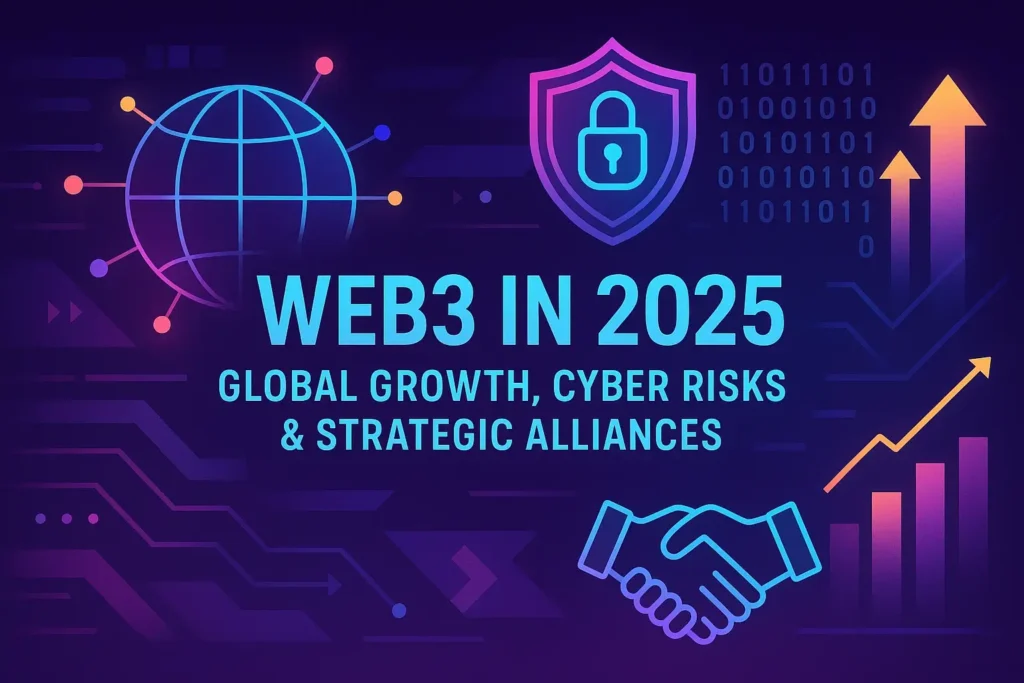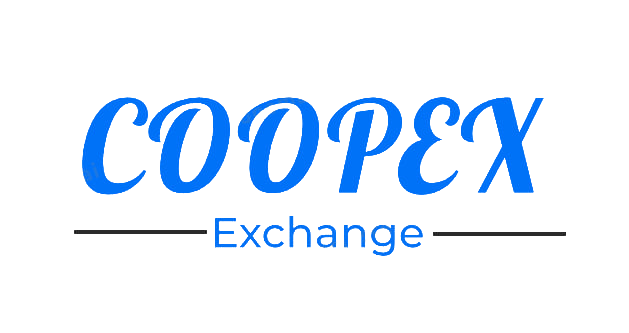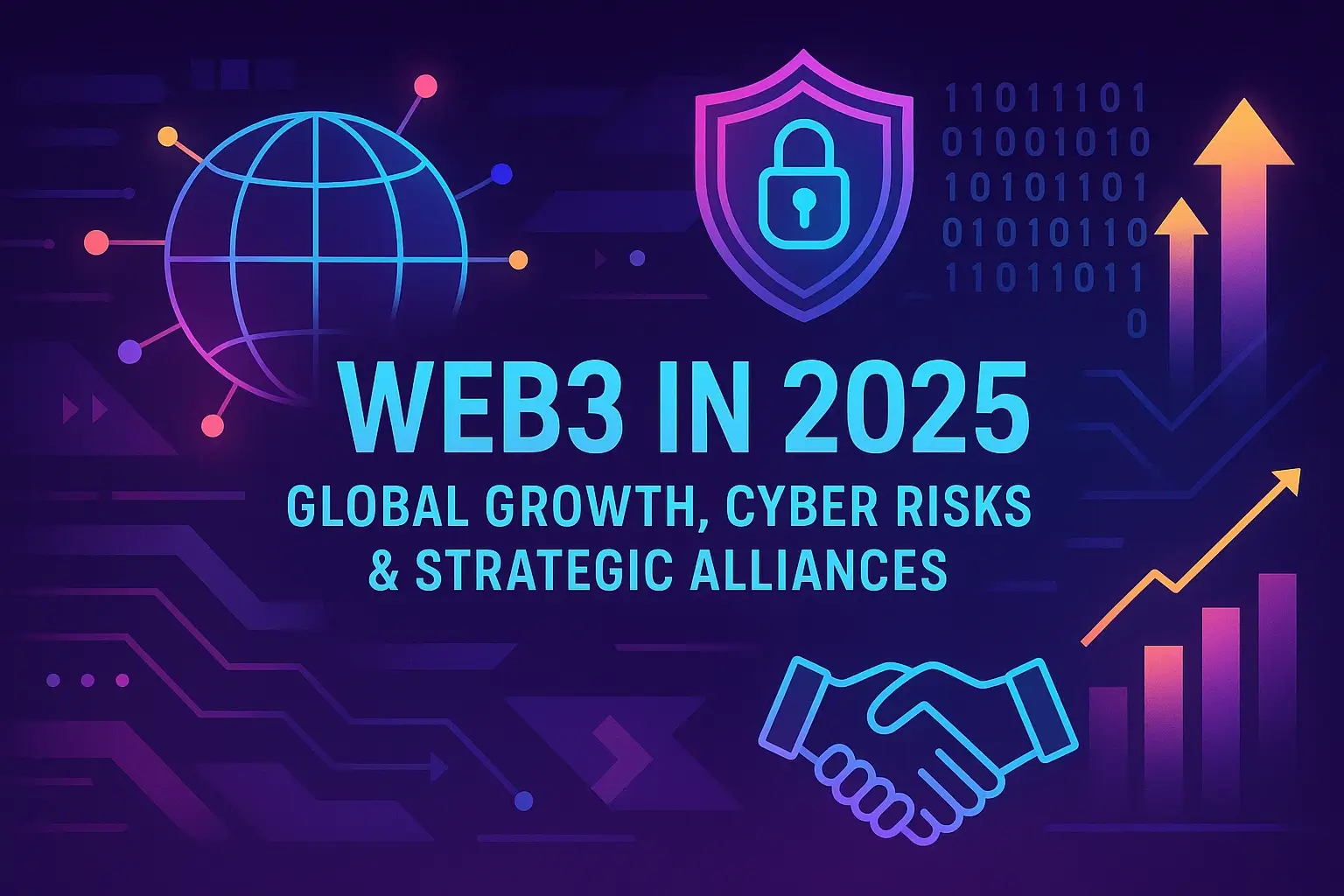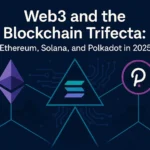Explore how Web3 is expanding in 2025, including India’s and China’s adoption, key partnerships, and rising cyber risks.
Web3 in 2025: Global Expansion, Security Risks & Key Partnerships
Web3, the next phase of the internet based on decentralized technologies and blockchain, is experiencing an accelerated evolution in 2025. With countries like India and China ramping up adoption, major tech firms striking strategic partnerships, and global cyber risks growing, this year marks a transformative moment for the decentralized web.
In this comprehensive report, we examine the latest developments, global policy shifts, industry partnerships, and the most critical cybersecurity concerns in the expanding Web3 ecosystem.
Global Adoption: Web3 Goes Mainstream
In 2025, Web3 is no longer a fringe technology. Governments and corporations are integrating blockchain infrastructure into national strategies and enterprise systems.
Regional Snapshots
India:
- India’s Web3 developer ecosystem has grown 220% YoY.
- Mumbai hosts Asia’s largest Web3 hackathon in 2025.
- IndiaStack 2.0 now incorporates decentralized identity tools built on Polygon.
- National Blockchain Sandbox launched with 130+ startups.
China:
- Beijing launches a state-backed Blockchain-as-a-Service (BaaS) platform for businesses.
- The government supports permissioned Web3 for trade logistics and smart manufacturing.
- Alibaba Cloud launches Web3 tools on OpenHarmony, China’s Android alternative.
- Hangzhou’s digital finance hub supports pilot projects on blockchain settlement.
United States & Canada:
- The U.S. CFTC and SEC introduce joint frameworks for crypto-compliant DAOs.
- Canada’s Ontario Digital Strategy includes blockchain for inter-agency transparency.
- Canadian banks pilot Ethereum-based payment rails for interbank clearing.
- Nasdaq integrates blockchain for instant post-trade settlement.
Europe:
- The EU’s MiCA regulatory framework becomes active in all 27 member states.
- France and Germany invest €800M into Web3 startup grants.
- The European Blockchain Services Infrastructure (EBSI) is being upgraded to support zk-rollup-based data sharing.
- Blockchain-based notarization becomes legal in 12 countries.
Africa & LATAM:
- Kenya and Nigeria lead in DeFi mobile adoption.
- Brazil launches public land registry on Ethereum Layer 2.
- LATAM stablecoins surge, with more than 35M users in Q2 2025 alone.
- Argentina’s central bank approves tokenized commodity bonds for exports.
Adoption Drivers
- Digital identity infrastructure (SSI, DID)
- Open banking and cross-border payments
- Decentralized AI integration for automation
- Tokenization of real-world assets (RWA)
- Stablecoin adoption for inflation-hedged savings
- Environmental data verification and carbon tracking
Recommended reading: Top Web3 Projects to Watch in 2025
Major Corporate Partnerships in 2025
Strategic collaborations are shaping the Web3 economy across finance, gaming, infrastructure, and retail sectors.
Top Partnerships So Far:
- Visa x Ethereum L2: Visa expands stablecoin settlement on Arbitrum and zkSync for cross-border B2B payments.
- Meta x Lens Protocol: Instagram now allows creators to mint and trade content NFTs natively on Lens.
- Microsoft x Chainlink: Hybrid cloud oracles power enterprise automation.
- Tencent x Filecoin: Tencent Cloud offers decentralized storage SDKs for Chinese Web3 apps.
- BlackRock x Polygon: Tokenized Treasury product now available to institutional investors.
- Sony x Astar Network: Launches Web3 gaming marketplace in Japan.
- PayPal x Avalanche: Embedded crypto wallets in e-commerce tools.
These partnerships enable scalability, regulatory compliance, and user experience improvements. Crucially, they also boost trust by bridging legacy systems and decentralized protocols.
Business Model Shifts:
- From user data ownership to user data monetization
- From centralized control to shared network governance
- From software-as-a-service (SaaS) to protocol-as-a-service (PaaS)
- From traditional crowdfunding to token-based community rounds
Web3 Cybersecurity Challenges in 2025
Despite technological progress, security remains a top concern in Web3 adoption. Hackers now exploit complex vulnerabilities, including smart contracts, oracle systems, and cross-chain bridges.
Key Threats:
- Reentrancy attacks on yield farming contracts
- Sybil attacks in DAO voting mechanisms
- Bridge exploits, accounting for over $1.2B in stolen funds in Q1–Q2 2025
- Decentralized identity leaks from improperly secured DID registries
- AI model manipulation used to trick smart agents into malicious transactions
Notable Security Enhancements:
- Zero-knowledge proof (ZK) integration into identity verification flows
- Multi-party computation (MPC) wallets for institutional custody
- AI-based anomaly detection in DeFi protocols
- Cross-chain consensus verification (Light Clients, zkBridges)
- Encrypted mempools and MEV protection via PBS (Proposer-Builder Separation)
Web3 Security Landscape (Q2 2025)
| Threat Type | Incidents | Financial Loss | Notable Cases |
| Bridge Exploits | 14 | $1.2B | Wormhole2, OrbBridge |
| Oracle Manipulation | 6 | $310M | GrainDAO, xAgro |
| Wallet Drains | 9 | $85M | MetaMask clones, WalletZero |
| Voting Exploits | 3 | $40M | DAOvoter hack |
| AI Prompt Injection | 2 | $15M | SmartBotDAO |
Infrastructure & Technology Trends

Web3 is evolving with modular frameworks, AI integrations, and hybrid on-chain/off-chain architectures.
Modular Blockchain Architecture
- Separation of execution, settlement, data availability
- Examples: Celestia (DA), Monad (execution layer), EigenLayer (security)
- LayerZero adoption in Asia for DePIN & cross-chain NFTs
AI x Web3
- AI agents managing smart contracts, investments, governance
- dApps with adaptive interfaces powered by ML (e.g., personalized DeFi portfolios)
- DAO tooling integrates GPT-based decision support bots
Interoperability & Cross-Chain Standards
- IBC (Inter-Blockchain Communication) gaining traction beyond Cosmos
- zkBridges replacing multisig-based bridges
- Polkadot 2.0 introduces seamless parachain asset transfers
Developer Tooling
- On-chain debugging and simulation (Tenderly, Hardhat v3)
- Real-time state monitoring for contract deployment
- Low-code dApp platforms for business integration
- SDKs for IoT x Blockchain hybrid applications
Government & Regulatory Engagement
Governments are increasingly taking a nuanced stance: enabling innovation while managing systemic risk.
India
- MeitY’s Blockchain Center of Excellence launched in Bangalore
- Draft legislation enables tokenized land ownership & agricultural subsidies
- UID 3.0 incorporates DID standards for social benefit programs
Europe
- MiCA full enforcement started in January 2025
- Passporting rights granted to compliant DAOs
- Introduction of Digital Euro pilot with Ethereum backend
- GDPR extension to smart contracts under “automated data processors”
China
- CBDC integration with state Web3 apps
- Heavily permissioned smart contract deployments
- Ministry of Industry outlines standards for blockchain-based logistics
United States
- Tax parity law passed: staked crypto treated like real estate income
- SEC sandbox opened for DeFi protocol trials under licensed observation
- NIST proposes Web3 audit standard for smart contracts
Market Growth & Ecosystem Metrics
As of May 2025, Web3 is growing rapidly across almost all metrics:
| Metric | Value (May 2025) | YoY Growth |
| Active Web3 Wallets | 237 million | +71% |
| DAOs with $1M+ Treasury | 5,900 | +45% |
| TVL in DeFi | $274 billion | +52% |
| NFT Market Volume | $18.7 billion | +39% |
| Number of Web3 Developers | 510,000 | +48% |
| Tokenized Asset Value | $93 billion | +66% |
| Blockchain API Calls/Day | 7.3 billion | +83% |
Web3 Predictions for Late 2025
- Web3 Social: Decentralized TikTok and YouTube alternatives gain traction.
- dApp Consolidation: UX improvements through appchains and intent-based UX.
- Stablecoin Wars: Central bank digital currencies (CBDCs) challenge algorithmic stablecoins.
- ZK Mass Adoption: Zero-knowledge proof tools become plug-and-play.
- AI DAOs: First self-evolving AI-run decentralized organizations.
- Carbon Credits 2.0: Verified carbon offsets traded via public blockchains.
- Real-World NFTs: Legal ownership for real estate and vehicles issued as soulbound tokens.
FAQ: Web3 in 2025
What are the main use cases of Web3 in 2025?
Identity, finance, decentralized AI, gaming, infrastructure, and digital content ownership.
Is Web3 regulated now?
Yes. Most developed economies have introduced Web3 frameworks covering DeFi, DAOs, and stablecoins.
Can businesses adopt Web3 without coding?
Yes. Low-code/no-code Web3 platforms allow integration via APIs and drag-and-drop dashboards.
What is the biggest challenge facing Web3 today?
Security. While usability is improving, exploits in smart contracts and bridges still cause major losses.
Is China embracing public blockchains?
Not entirely. It focuses on permissioned infrastructure, though private companies explore Ethereum compatibility abroad.
Will AI fully control DAOs in the future?
Likely in a supervisory role, but full automation raises ethical and technical concerns. Hybrid governance is emerging.

Herbert Vega is a blockchain and cryptocurrency expert with a passion for decentralized technology. He is the founder and CEO of XYZ Decentralized Exchange, a cutting-edge platform that allows users to trade cryptocurrencies in a secure and decentralized manner.




